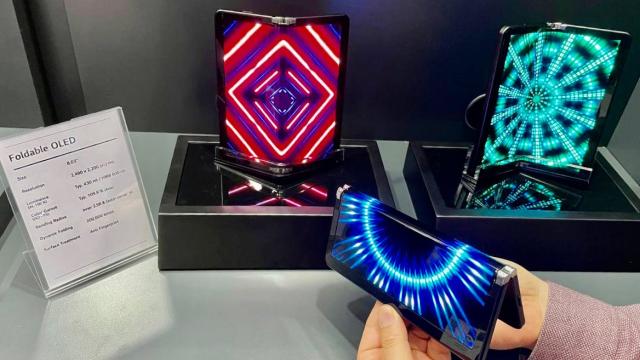It’s been a slow rollout for smartphones that transform into larger-screened tablets using a flexible OLED display, but LG is hoping it can help accelerate the adoption of these adaptable devices, and maybe knock a few bucks off its own steep price tags, with a new compact OLED screen that can safely fold both inward and outward.
If you browse through the handful of folding mobile devices currently available to consumers, you’ll see they generally take two different approaches. Devices like the Samsung Galaxy Fold 3 feature an OLED that folds inward, so the screen is protected inside when closed, while devices like the Flexpai from Royole have an OLED screen that folds outward, leaving it exposed and accessible while the smartphone/tablet is folded in half.
Given how delicate the current crop of OLED displays can be, Samsung’s approach seems to be better suited for consumer devices, as there’s less risk of a protected folding screen getting damaged when closed and banging around inside a user’s pocket. The drawback to that approach is that, in order to make devices like the Galaxy Fold 3 useable as a smartphone when folded, a second screen has to be added to the outside. This, undoubtedly, contributes to high prices, as the Fold 3 costs $US1,800 ($2,499).
Any flexible OLED screen can be folded in both directions — it’s a neat tech demo we’ve seen since the technology was first introduced decades ago — but the displays, their added protective layers, and even the mechanical hinges on devices, are all optimised to increase durability for folding motions in one specific direction only. It doesn’t have to be that way, though, as LG has demonstrated at the 2022 Society for Information Display (SID) show currently taking place in San Jose, California. There, the company revealed an eight-inch OLED display that can be completely folded both inward and outward, as well as a “special folding structure” that minimizes screen creases while still ensuring a bi-directional folding mobile device would provide a “comfortable and cutting-edge user experience.”
Despite the added flexibility, LG claims the new OLED panel (which boasts a resolution of 2,480 x 2,200 pixels, or 413 pixels per inch) can still be folded over 200,000 times without severely damaging the screen or “compromising its performance,” which is the same durability claims Samsung makes for the Galaxy Fold 3. But unlike the Galaxy Fold 3, a device using LG’s new panel could go from a larger tablet to a more compact smartphone form without the need for an additional screen when folded outward, while still allowing a user to then completely fold it the other way around to ensure the display is protected when slipped into a pocket or a bag. Unfortunately, there’s no timeline on when new devices might adopt LG’s new screen tech, but as companies are desperate for gimmicks to help justify the cost of folding smartphones, it’s safe to assume LG won’t have trouble convincing companies to take advantage of it.
